Throughout history, memetic propagation—the spread of ideas, narratives, and ideologies—has evolved alongside media technology.
In the 1500s, Gutenberg's printing press gave rise to the pamphlet revolution. Ideas, once confined to oral tradition or hand-written manuscripts, suddenly scaled across Europe. The market cap of the print industry steadily grew: ~$0.35B (1500), ~$0.6B (1600), ~$1.25B (1700), ~$2.7B (1800), and exploded to ~$120B (1900, all inflation-adjusted).
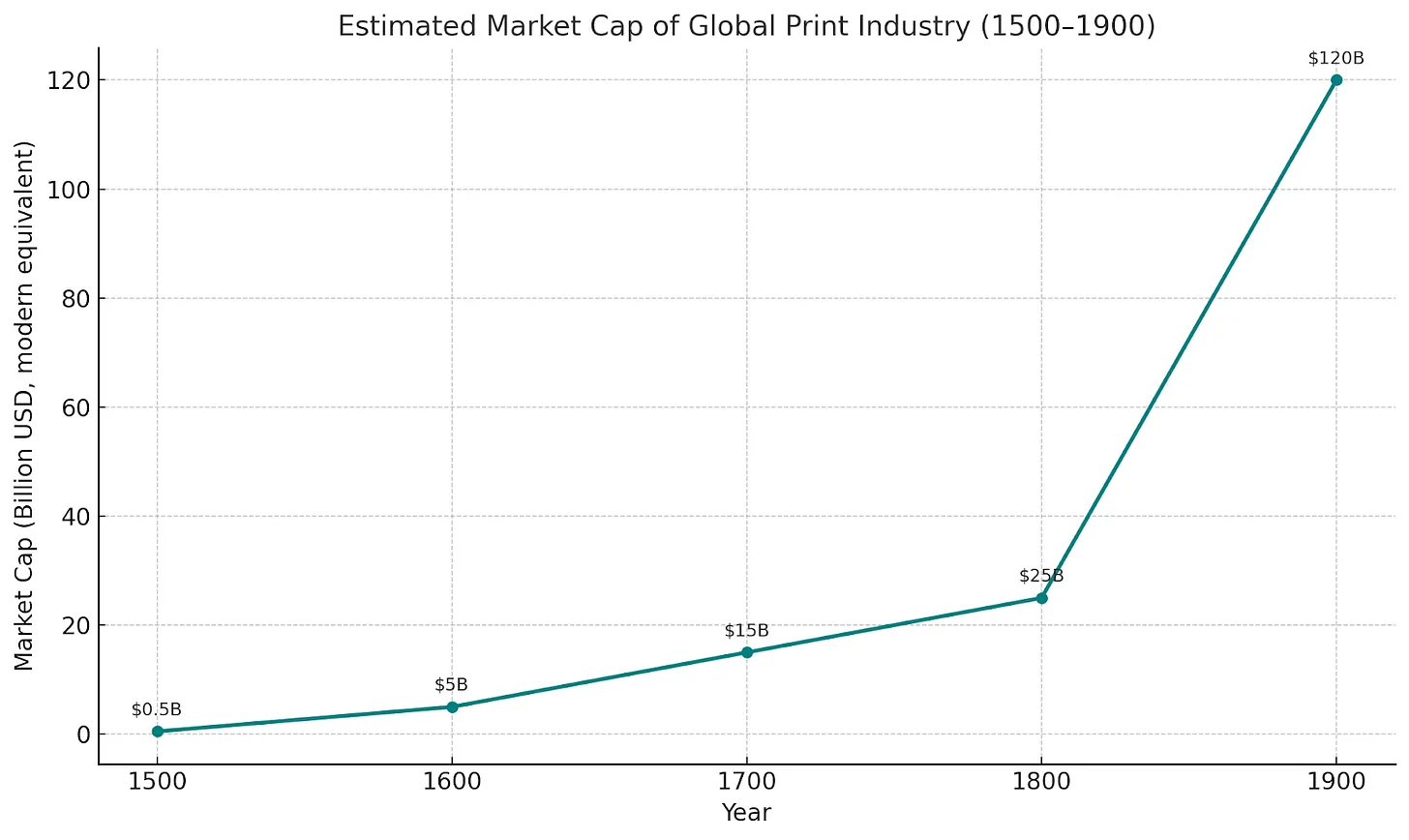
In the 1930s, radio emerged as a new memetic force. By 1940, 83% of U.S. households owned a radio, and Americans were listening for nearly 4 hours daily. Advertising on radio alone reached $155 million in the U.S. by 1940. Leaders like Roosevelt used fireside chats to comfort a Depression-era nation, while Nazi Germany’s used it for broadcasting coordinated propaganda across the Reich.
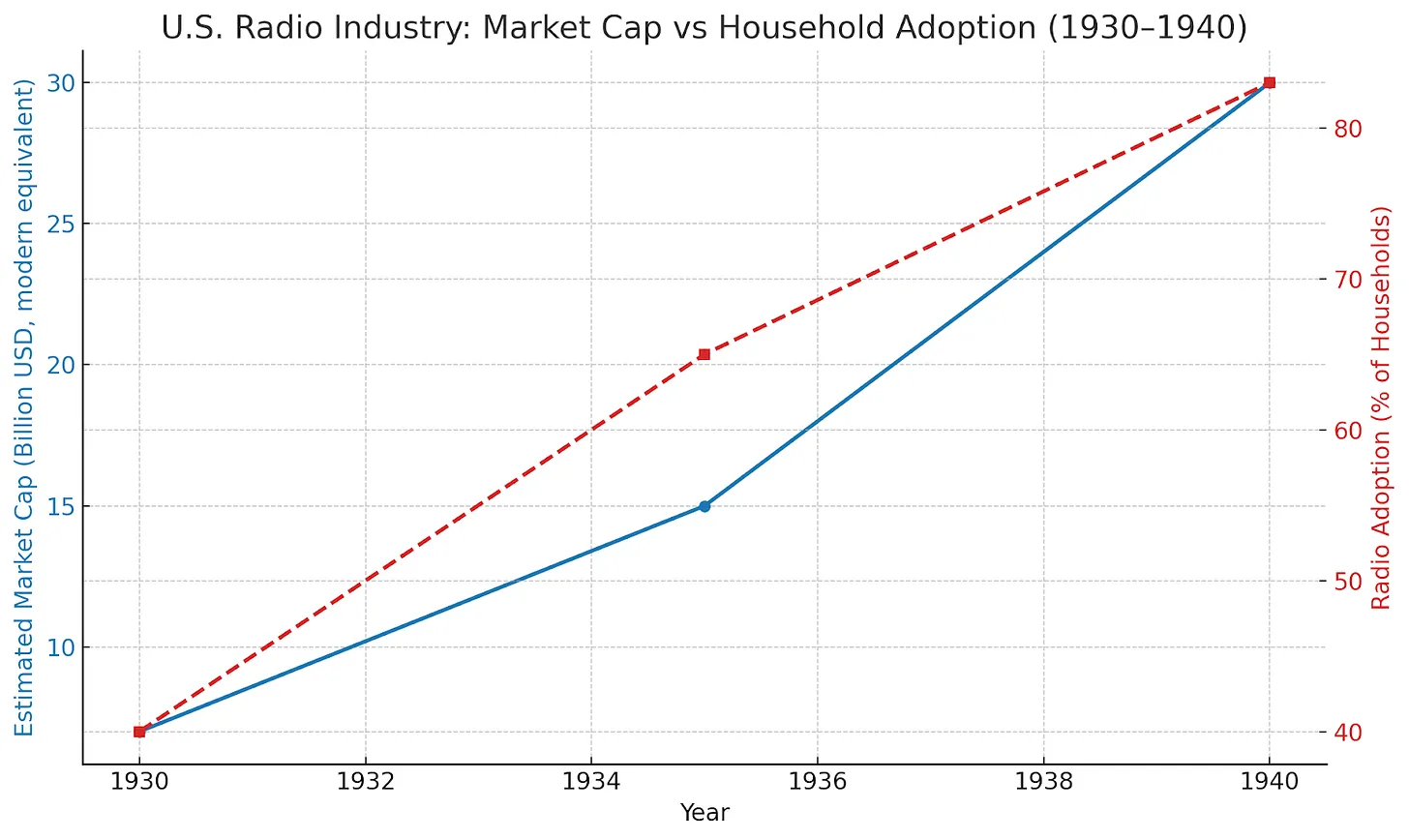
By the 1950s, television took over in 1950, 9% of homes had TVs and by 1960, 90% did. American families watched Cold War news, presidential debates, and civil rights protests unfold in real time. The Vietnam War became the first “televised war,” shifting public opinion through graphic imagery and nightly reports—demonstrating television’s unmatched power to sway mass sentiment.
Today, the global broadcasting/cable TV industry is worth ~$356 billion.
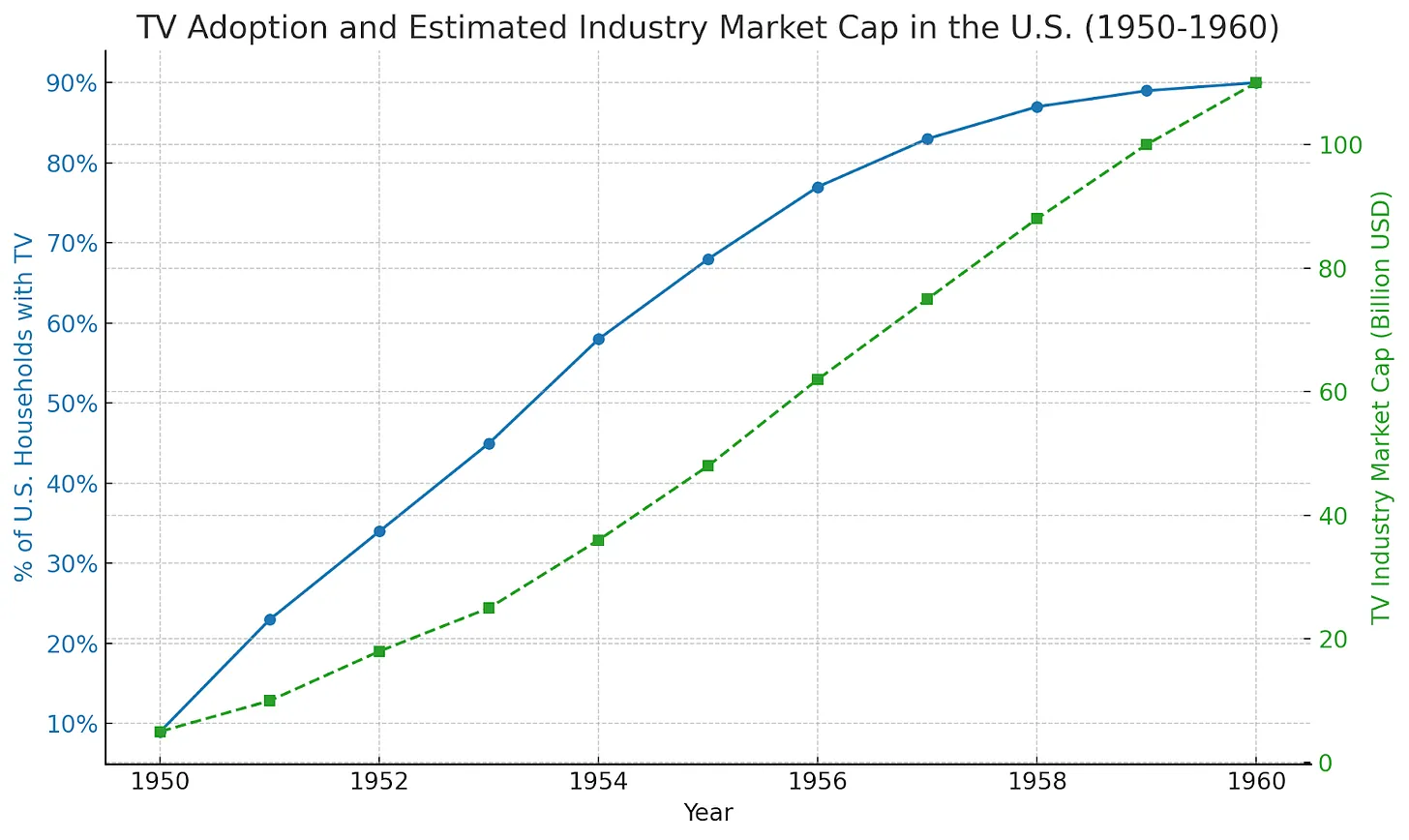
Now came the internet, which fundamentally changed the nature of content distribution from a centralized to a decentralized type and this changed the ways of memetic propagation too from #BLM to #MeToo, people used Twitter, Facebook to spread their opinions.
This may look different from the outside, but the fundamentals of memetic propagation are still intact:-
-
Imitation/Replication - Whether through hashtags, memes, books this is the way.
-
Variation - memes/messages tailored differently according to different taste of people
-
Transmission - This changes from gospel of Jesus and other gods(there are), to books, to radio and now to memes.
Modern Attention Economy
In earlier times, ideas were spread with books and pamphlets because of a content-starved society. But today, people are flooded with content, we no longer suffer from a lack of narrative, but from oversaturation. Society has shifted toward consuming less and producing more.
This has crushed attention spans to sub-minute windows, TikToks and YouTube Shorts dominate. But there's a twist: when money enters the frame, attention snaps back. Financial incentives lengthen engagement dramaticall, even the most unfocused can lock in for hours if money's on the line, just see the account of crack-boy [Trevv,](https://x.com/9trevv\)\\ even he dances when someone buy his coins ;)
Earlier, bribes were how money entered memetic propagation—selected elites were paid to spread ideas. But this model doesn't scale, the average person had no stake.
The majority were passive observers, not participants.
What if everyone could be incentivized to participate? To speculate? Even in a short-lived revolution? Now they can.
Memecoins offer scalable bribes embedded in public markets. Anyone can profit by being early to a memetic idea, the speculation itself is the propagation - this idea is the Capitalism Utopia where personal finance is a key-holder of every revolution(xd)
$PNUT is a perfect example of this, it was THE memetic idea propagated by republicans through CT and power of financial speculation of a memecoin. It was the perfect to bribe/gift/encourage people to vote without them even knowing it.
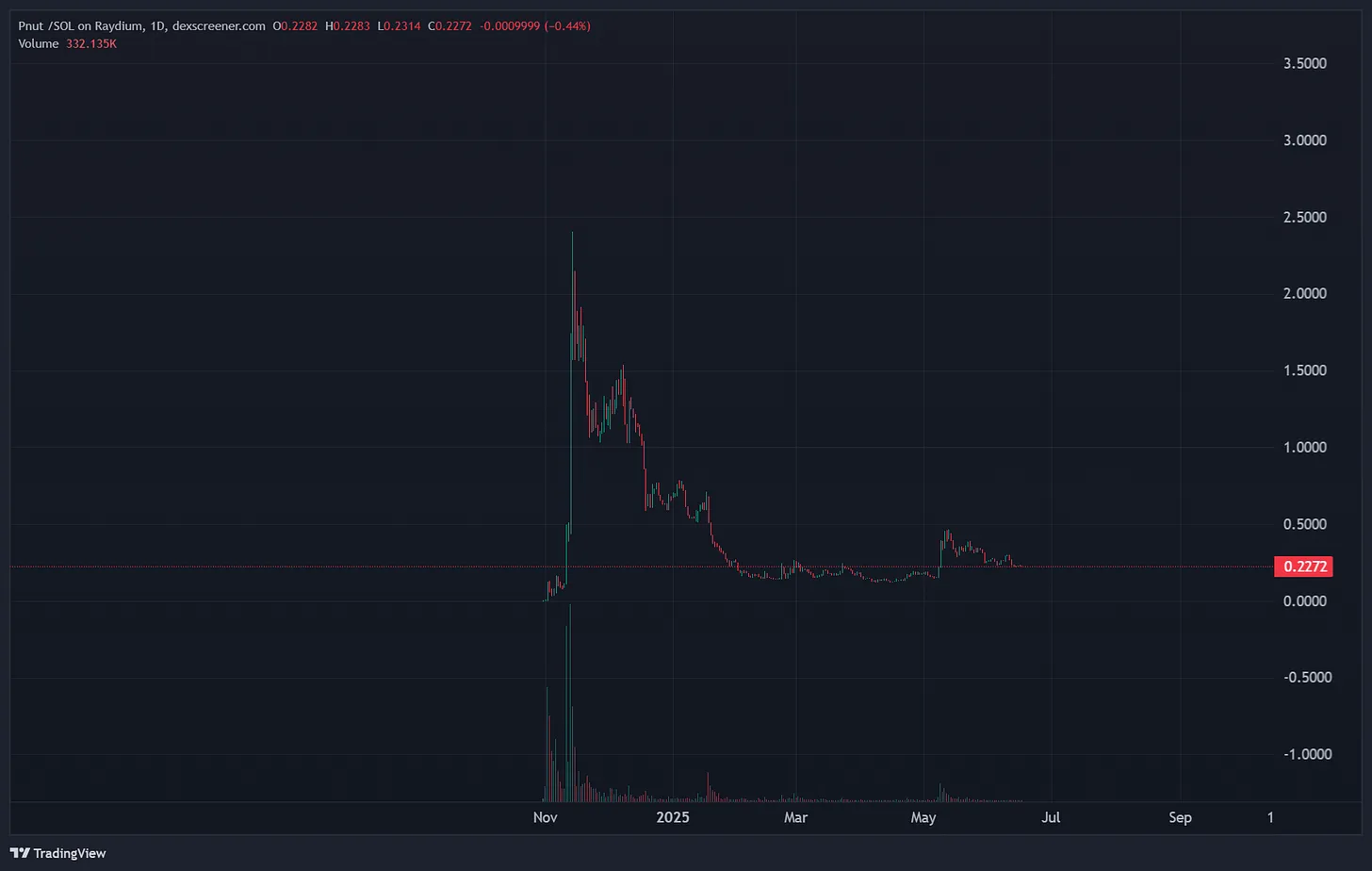
Enters pump.fun and it is not what you know, if a1lon9 executes on what I’m trying to convey here, it can be the biggest thing since Facebook(read this on how Zuck boy indirectly started a full blown civil war)
The case for MPS(multi-party streams) on pump.fun
If you reading this, most probably you know what pump.fun is and with the TGE of $PUMP token, CT is as usual talking about Revenue, fee, token buy-backs, what can you expect out of circle of VC which I won’t talk about but will provide a picture.
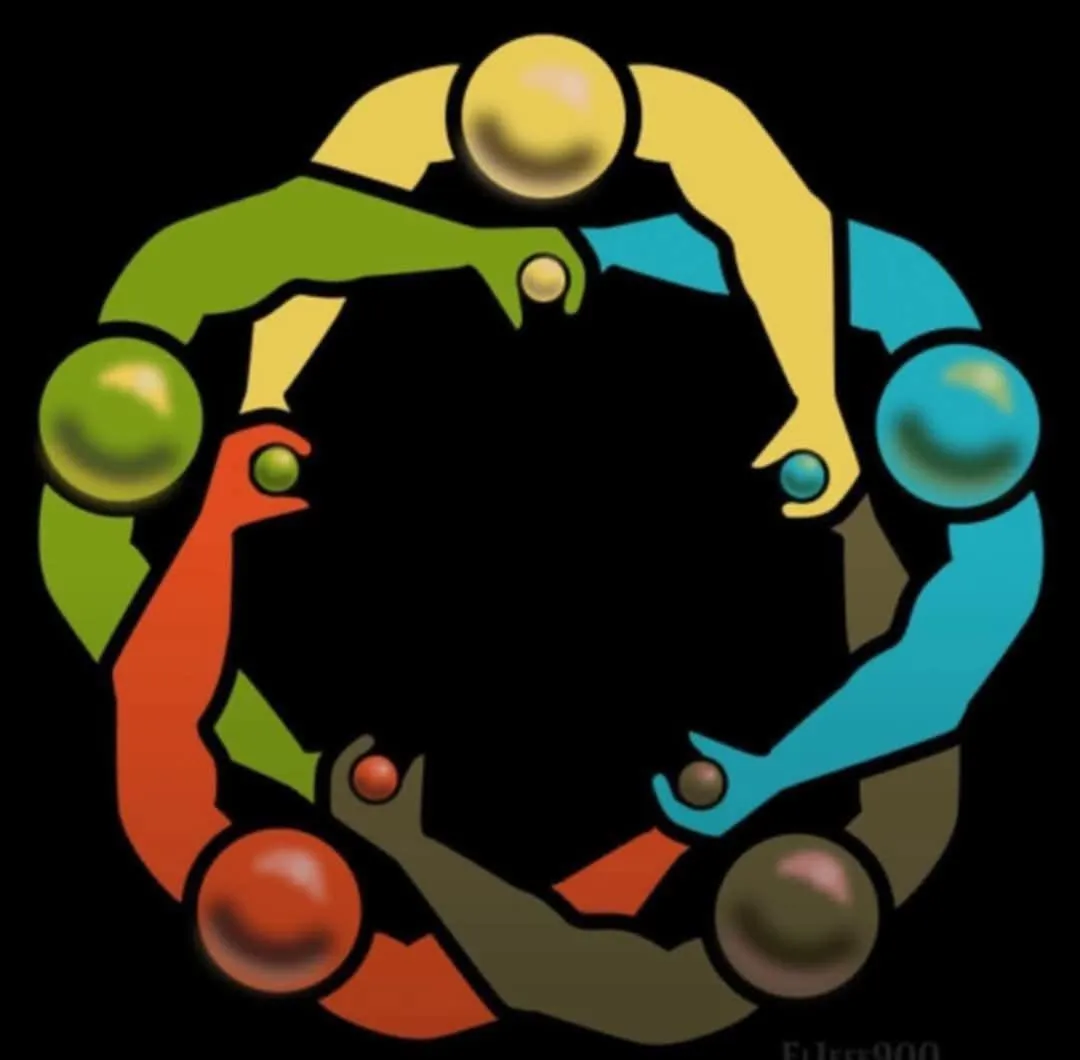
It's the default destination for launching anything—an idea, meme, stream, or vibe. Memes aren't discovered despite the platform, but because of it.
Memecoin charts perfectly displays, the attention economy, the peak, troughs, movement in the charts perfectly display they attention/memetic influence of a topic on a timeframe scale. This is the perfect instrument to show how a revolution which is an idea only is shaped across time.
MSP takes it levels ahead, the model for multi-stream memetic engine is simple :-
-
There is be a minimum requirement of token like 0.5% or something, then a wallet can live stream permissionlessely instead of asking permission from the dev-wallet which in many cases sells the token instantly
-
And then the top wallets can add whatever streams they find beneficial for propagation of the core idea.
-
Streams are globally visible and on-chain.
-
In effect, multiple independent streamers can simultaneously promote the same coin, each adding content and personality to the idea. Each streamer is like a cell in a decentralized propaganda network: they broadcast the coin’s narrative live to their viewers, giving the coin viral exposure
For example,
-
$NEET coin: Unemployed people stream about the downsides of 9-to-5 life, urging viewers to buy into the revolution.
-
LA protestors launch a revolt coin and multiple participants at once stream events which is used fund operations transparently through token sales.
This multi-stream model resembles both grassroots collective action and viral marketing, unlike a single TV broadcast (top-down state media)
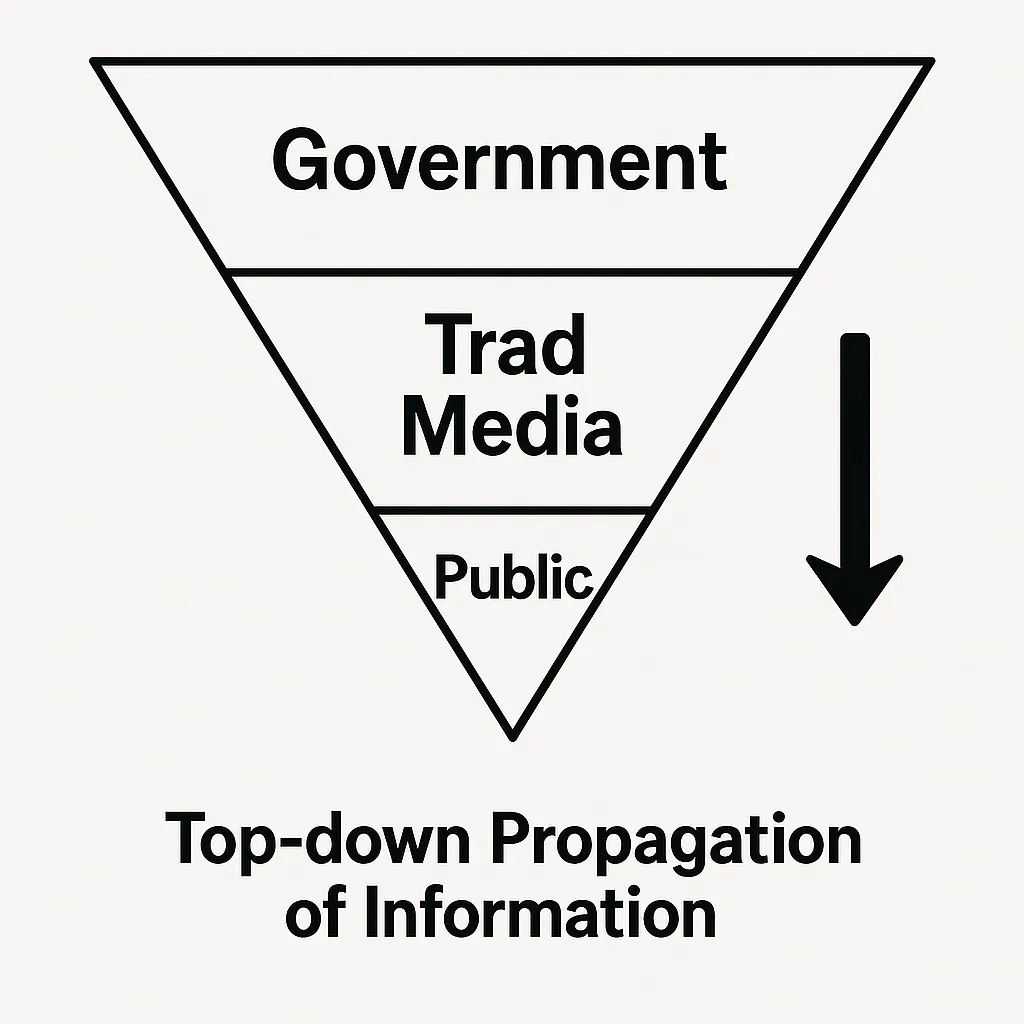
(Imagine a bottoms-up approach where the streamers push an idea to more and more influential people)
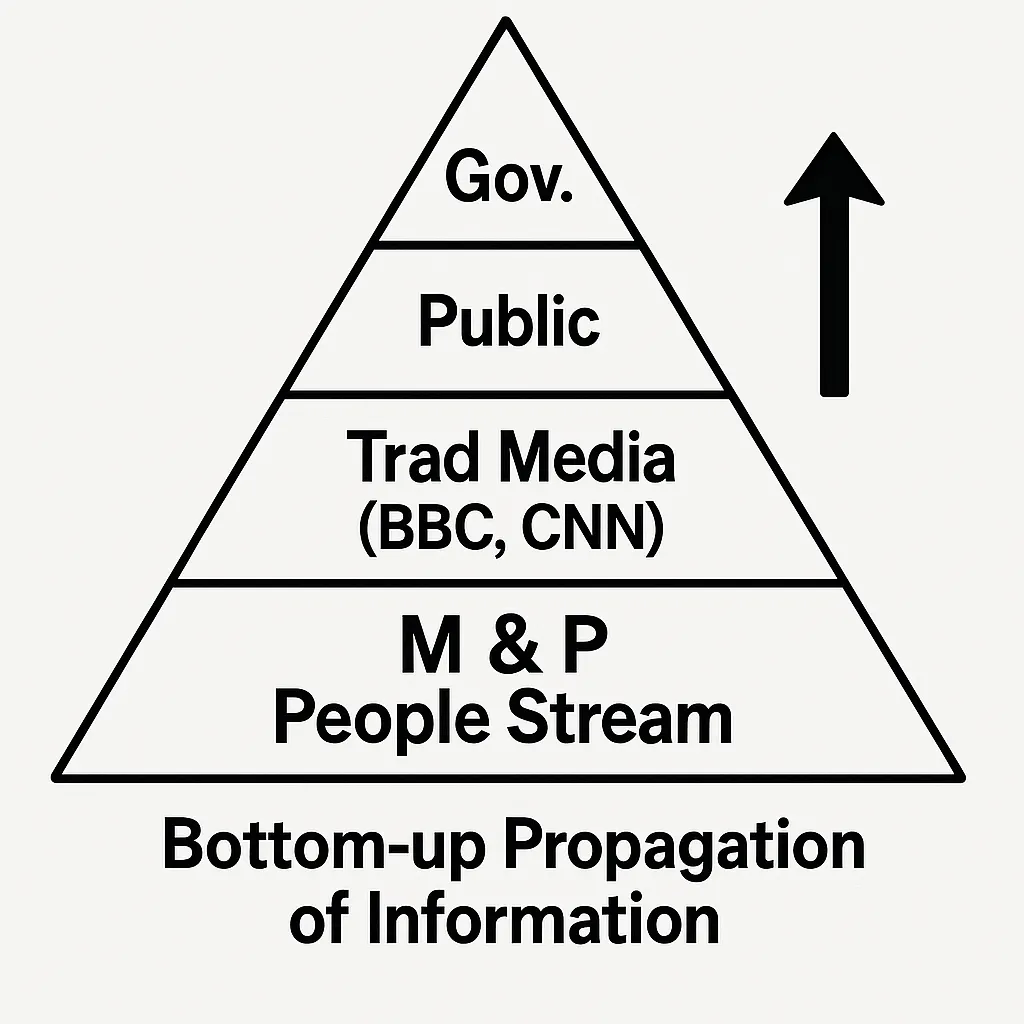
In contrast to traditional propaganda, there is no central permission: anyone can stream their pitch and pump a coin. Funding is permissionless, sourced from token buyers instead of ad budgets or state handouts.
By comparison with history: Pump.fun’s model is unprecedented in scale and openness. In the past, only state or mass media and well-funded organizations could reach millions at once.
Grassroots movements used word-of-mouth or letter writing, which is slow; pump.fun compresses those processes into live global events. In effect, it takes the word-of-mouth model (peer-to-peer influence) but amplifies it with technology: dozens of streamers can reach simultaneous audiences worldwide without requiring any central studio or permit. It is a purely permissionless memetic network: far more viral and decentralized than any past approach, yet funded and measured in real-time by the crypto markets.
What about manipulations serr?
There are 2 type of people - one who buys purely for speculaltion and other who wants to support the movement/idea
Even if someone buys the token purely for profit—without caring about the underlying idea or revolution—that’s still completely valid. In fact, that’s the foundation of prediction markets, t proves the idea has memetic power: strong enough to attract speculators, not just believers, and that’s a good thing.
The more people who hold the token—even for different reasons—the more the meme spreads. Some will flip it for gains, others will hold out of conviction.
Either way, the token becomes both a funding mechanism and a vehicle for memetic propagation, using speculation itself as the engine.
How to value pump.fun
Historically Cashflow has been the most used indicator of evaluation a stock or an asset with few exception such as Gold(Store of Value), Emerging tech(has a very high premium meaning they trade well above the cashflow, see ETH), so for pump.fun I’ll take the route of treating it as a launchpad for ideas or memetic revolutions not the constantly thrown around 700m fee.
MSP opens up a new form of monetizable stream of permissionless-advertisement never seen before.
People would be able to stream ads through their streams of they find it suitable without any interference from pump.fun, this would create new dynamics between the speculators and movement adorers on who should held the supply of the memecoin.
If we analyze past memetic industries:
-
Printing Press: ~$120B by 1900
-
Radio: ~$25B by 1940
-
TV: ~$100B+ by 1960s; $356B+ today
-
Cinema: $40B in box office + indirect ad value
-
Social Media: ~$700B+ (Meta, TikTok, X, YouTube, etc.)
Pump.fun fuses aspects of every one:
-
Like the printing press, it's permissionless.
-
Like radio, it's real-time.
-
Like TV, it's engaging.
-
Like cinema, it conveys stories.
-
Like social media, it's user-driven.
-
Like markets, it's measurable and monetized.
Thus, the memetic platform that integrates all of them, with full financial rails and global access, has a theoretical valuation potential in the multi-trillion-dollar range.
Even if Pump.fun only captured:
-
10% of social media attention (~$70B)
-
5% of global ad spend (~$45B)
-
2% of daily crypto speculation (~$30B)
It would sit at a ~$150B valuation—and that's conservative.
Memecoins transcend language, borders, and identity || People die, but ideas live on || Tokens are immortalized narratives.